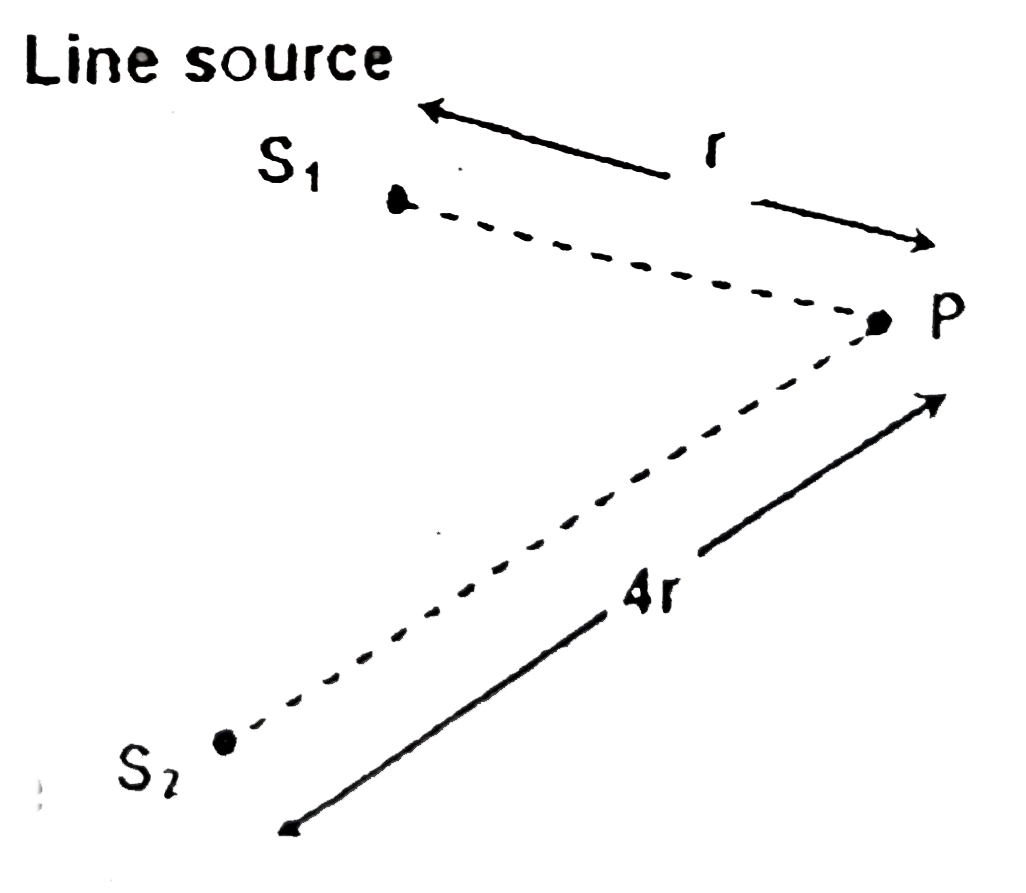The intensity produced by a long cylindrical light source at a small distance r from the source is proportional to
1r2
1r3
1r
none of these
The correct Answer is:C
To solve the problem regarding the intensity produced by a long cylindrical light source at a small distance r from the source, we can follow these steps:
1. Understand the Problem: We are dealing with a long cylindrical light source and need to determine how the intensity of light varies with distance r from the source.
2. Identify the Geometry: The light source is cylindrical and emits light uniformly along its length. The wavefronts produced by this source will be cylindrical as well.
3. Define Intensity: Intensity I is defined as the power P per unit area A:
I=PA
4. Calculate the Area: For a cylindrical wavefront at a distance r from the axis of the cylinder, the area A through which the power is distributed is the lateral surface area of the cylinder. The formula for the lateral surface area of a cylinder is:
A=2πrL
where L is the length of the cylinder.
5. Substitute into the Intensity Formula: Now, substituting the area into the intensity formula, we get:
I=P2πrL
6. Analyze the Relationship: From the equation I=P2πrL, we can see that intensity I is inversely proportional to r:
I∝1r
7. Conclusion: Therefore, the intensity produced by a long cylindrical light source at a small distance r from the source is inversely proportional to r.
Answer:
The correct option is that the intensity is inversely proportional to r (Option 3).
---
I=PA
A=2πrL
where L is the length of the cylinder.
I=P2πrL
I∝1r
The correct option is that the intensity is inversely proportional to r (Option 3).
Topper's Solved these Questions
- PHOTO ELECTRIC EFFECT AND WAVE PARTICLE DUALITYBOOK - HC VERMA ENGLISHCHAPTER - PHOTO ELECTRIC EFFECT AND WAVE PARTICLE DUALITYEXERCISE - question for short answer
13 Videos
- SEMICONDUCTOR AND SEMICONDUCTOR DEVICESBOOK - HC VERMA ENGLISHCHAPTER - SEMICONDUCTOR AND SEMICONDUCTOR DEVICESEXERCISE - Question for short answer
11 Videos
Similar Questions
The intensity of light at a distance 'r' from the axis of a long cylindrical source is inversely proportional to 'r'
View SolutionA uniform magnetic field along a long cylindrical rod varies with time as (B=αt), where α is positive constant. The electric field inside the rod as a function of radial distance r from the central axis is proportional to
View SolutionThe intensity of a point source emitting sound at distance 3 from the source is 0.707 W/m2? What is the average power output of the source ?
View SolutionThe intensity of sound from a point source is 1.0×10−8Wm−2, at a distance of 5.0 m from the source. What will be the intensity at a distance of 25 m from the source ?
View SolutionIf A is the amplitude of the wave coming from a line source at a distance r, then :
View Solutionstatement I: The intensity of a plane progressive wave does not change with change in distance from the source.
Statement II: The wavefronts associated with a plane progressive wave are planar.
View SolutionIf interference is complete or cent percent then the frequency of observed crossover will be
View SolutionA photo cell is receiving light from a source placed at a distance of 1m. If the same source is to be placed at a distance of 2m , then the ejected electron
View SolutionIntensity due to line source S1 at a distance of r is I0 and intensity due to other line source S2 at a distance of r is 4I0 and frequency of both source are equal. If interference occurs at a point P as shown in the figure and wavelength of both sources is r, find the resultant intensity (in wa/m2) at P. (where I0=2watt/m2)

View SolutionA point source of sound emits a constant power with intensity inversely proportinal to the square of the distance from the source . By how many decible does the sound intensity level drops when you move from point P1 to P2 ? Distance of P2 from the source is two times the distance of source from P1 .
View Solution
